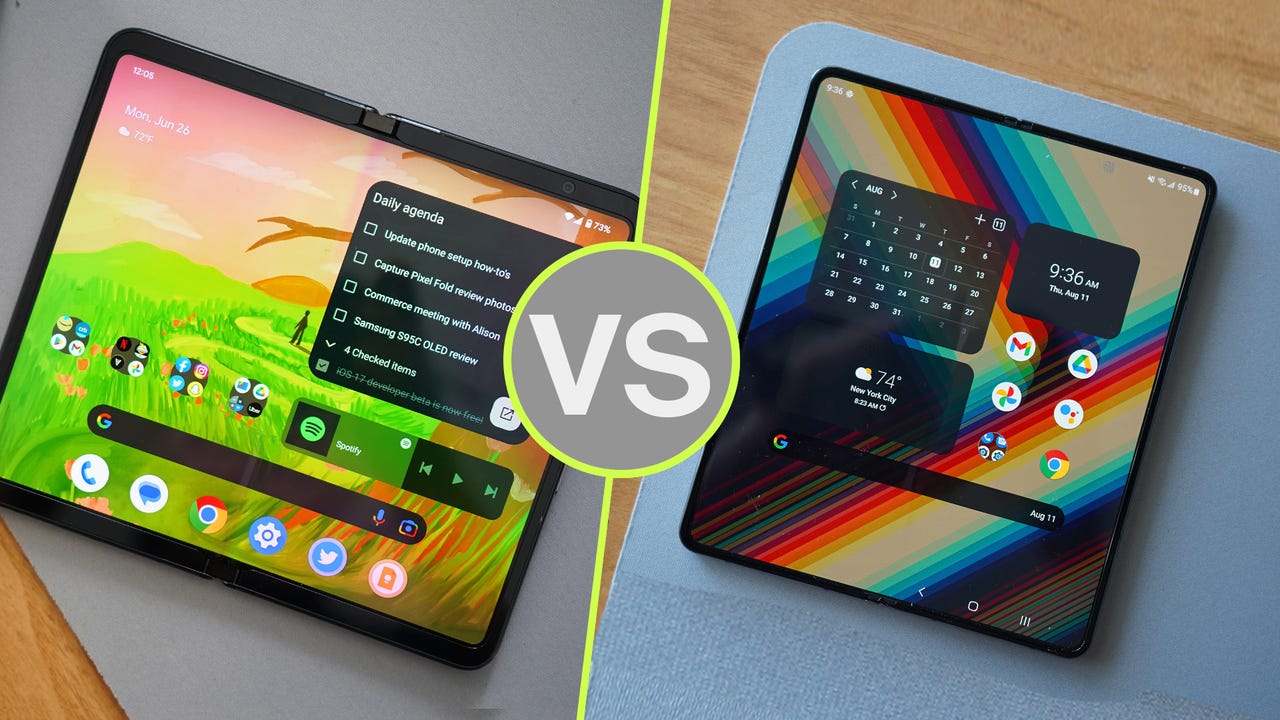'ZDNET Recommends': What exactly does it mean?
ZDNET's recommendations are based on many hours of testing, research, and comparison shopping. We gather data from the best available sources, including vendor and retailer listings as well as other relevant and independent reviews sites. And we pore over customer reviews to find out what matters to real people who already own and use the products and services we’re assessing.
When you click through from our site to a retailer and buy a product or service, we may earn affiliate commissions. This helps support our work, but does not affect what we cover or how, and it does not affect the price you pay. Neither ZDNET nor the author are compensated for these independent reviews. Indeed, we follow strict guidelines that ensure our editorial content is never influenced by advertisers.
ZDNET's editorial team writes on behalf of you, our reader. Our goal is to deliver the most accurate information and the most knowledgeable advice possible in order to help you make smarter buying decisions on tech gear and a wide array of products and services. Our editors thoroughly review and fact-check every article to ensure that our content meets the highest standards. If we have made an error or published misleading information, we will correct or clarify the article. If you see inaccuracies in our content, please report the mistake via this form.
Google Pixel Fold vs. Samsung Galaxy Z Fold 4: Which phone should you buy?

Up until now, Samsung, and the global dynamic that is Huawei, Honor, Oppo, and Xiaomi, have been the only manufacturers making phone-to-tablet foldables. But unlike the latter group, Samsung is the only manufacturer selling its folding handsets in the U.S.
Review: Google Pixel Fold: A weekend later, I'm nearly sold
But soon, U.S. customers will be able to get their hands on the Samsung Galaxy Z Fold's biggest competitor yet: Google's Pixel Fold. From ZDNET's week of testing, three things are certain with the latest foldable: It has every right to be called a Google Pixel, the form factor gives Samsung a run for its money, and foldable phones are still very very expensive.
If you're prepared to splurge on a new foldable, both the Google Pixel Fold and Samsung Galaxy Z Fold 4 start at $1,799 and offer unique feature sets that make them both equally compelling. To help you decide on one, I've broken down the key reasons to buy one phone over the other.
Specifications
| Google Pixel Fold | Samsung Galaxy Z Fold 4 | |
| Price | From $1,799 | From $1,799 |
|---|---|---|
| Processor | Google Tensor G2 | Qualcomm Snapdragon 8+ Gen 1 |
| Displays | External: 5.8-inch FHD+ OLED, Internal: 7.6-inch OLED at 120Hz | External: 6.2-inch FHD+ AMOLED, Internal: 7.6-inch AMOLED at 120Hz |
| RAM/Storage | 12GB with 256GB or 512GB | 12GB with 256GB, 512GB, or 1TB |
| Cameras | 48MP wide, 10.8MP ultrawide, 10.8MP telephoto, 9.5MP front, 8MP inner | 50MP wide, 12MP ultrawide, 10MP telephoto, 10MP front, 4MP inner |
| Battery | 4,821mAh with 30W charging | 4,400mAh with 25W charging |
| Connectivity | USB-C, 5G (mmWave + sub6) | USB-C, 5G (mmWave + sub6) |
| Colors | Porcelain and Obsidian | Graygreen, Phantom Black, Beige, and Burgundy |
You should buy the Google Pixel Fold if...
1. You're not a fan of Samsung's TV remote form factor
With each iteration of Samsung's Galaxy Z Fold, I've continued to criticize the narrowness of the device when collapsed, with it feeling more like a remote control than a pocketable smartphone. Some users will find comfort in that design, I know, but the underlying problem with it is that not all apps are optimized for the taller aspect ratio. As a result, text can often look squished, landscape images are resized significantly, and typing can be a finger workout.
Also: Is this the best Pixel Fold case right now? Here's Google's very own
The solution to this, which I previously pointed out when testing Oppo's Find N2, is a wider aspect ratio on the front display. And the Google Pixel Fold has just that, with a 5.8-inch panel that should sit comfortably in most hands. Naturally, when unfolded, this also makes for a wider interior display, which is what you'd want if media consumption is one of your primary use cases with a tablet-to-phone foldable (and you're not a fan of the extreme letterboxing that comes with the Z Fold 4
2. The Google-exclusive features appeal to you
Buying a Google Pixel gives you several exclusive benefits, including computational photography features like Magic Eraser and Photo Unblur (thanks to the Tensor chips powering the units), a solid privacy and security suite including Google's free VPN service, and now, tools that are tailored to the Pixel Fold form factor.
Particularly, users will be able to leverage Google's live translation database to produce real-time transcriptions of dialogue with the Pixel Fold. Thanks to the dual-screen nature of the device, as you're conversing with a person who speaks another language, you can hold up the Pixel and it will display what each person is saying in your language of choice. This is especially helpful if you're traveling to a foreign country, or you're a social worker collaborating with clients who speak another language.
3. Endurance is a priority
From ZDNET's testing, the Samsung Galaxy Z Fold 4's battery life was passable; there's certainly room for improvement. The Pixel Fold's 4,821mAh capacity should yield greater endurance numbers than Samsung's 4,400mAh, and it most certainly did during our initial review period.
Also: Google's latest Pixel feature drop is here. Check out what's new
There's also a minor bump in charging speed with the Pixel, with Google claiming a 30W rating versus Samsung's 25W. We'll have to put the Pixel through its rounds before finalizing a verdict on its battery life, but on paper and after a week's worth of testing, it's the clear winner.
You should buy the Samsung Galaxy Z Fold 4 if...
1. You want a more refined foldable
The most important part of the Samsung Galaxy Z Fold 4 is the number in its name. This is the fourth generation of Samsung's large-screen foldable, which means the company has had more years to experiment, acquire customer feedback, and refine its shape-shifting handsets than Google, at least from the surface level. (I'm sure Google has been testing its own foldable to a high extent, too.)
Review: Samsung's Galaxy Z Fold 4 is a high-priced ticket to productivity heaven
Needless to say, the Galaxy Z Fold 4 is the safer pick of the two, with a hardware experience that Samsung seems fully committed to, a healthy amount of software and security updates, and better aftersales support (for now) including third-party accessories and access to repair parts.
2. You can appreciate the for-business features
In some ways, the bloatware-free nature of pure Android works against Google here. For how much you're paying for these devices, the feature set on the Z Fold 4 should bring more value, especially if you're a business user. Features like DeX mode are present, allowing you to convert OneUI into a desktop-like overlay. You also have S Pen support for precision inputs. And if extra storage is a selling point, there's a 1TB option for the Z Fold 4. The Pixel Fold caps out at 512GB.
3. A deal exists
It's been more than half a year since the Galaxy Z Fold 4 launched, which means a quick scan through major retailers should land you a sweet discount on the foldable. You can expect to pay less if you're open to a renewed or second-hand device. The price difference, in and of itself, may be enough to sway you toward Samsung's Z Fold.
